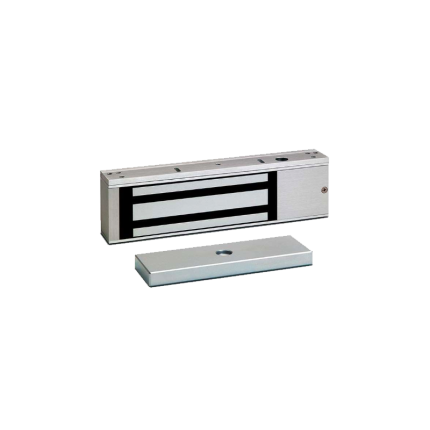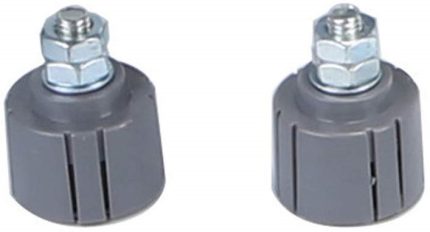magnetic
Magnetic lock
Ship or pick up from our office.
Magnetic lock
*Capacity: 180 Kg *DC 12 V A magnetic lock, also known as an electromagnetic lock or maglock, is a locking device that uses the principles of electromagnetism to secure a door. Unlike traditional mechanical locks, it has no moving parts. How It Works A magnetic lock consists of two main components:- Electromagnet: This is typically mounted on the door frame. It contains a coil of wire wrapped around a ferromagnetic core.
- Armature Plate: This is a steel plate mounted on the door itself, designed to align with the electromagnet.
- High Security: Magnetic locks can provide a very strong holding force, making them difficult to force open. They are also virtually unpickable, as there are no keyholes or cylinders.
- Durability and Low Maintenance: With no moving parts, magnetic locks experience less wear and tear than traditional locks, leading to greater longevity and reduced maintenance needs.
- Quick Operation: They unlock instantly when power is cut, allowing for quick release, which is beneficial in high-traffic areas or emergencies.
- Remote Operation and Access Control Integration: Magnetic locks can be easily integrated into electronic access control systems, allowing for remote operation, key card/fob access, biometric scanning, and detailed access logging.
- Versatility: They can be installed on various door types, including glass, wood, and metal, and are suitable for both swinging and sliding doors.
- Ease of Installation: Compared to some other electric locks, maglocks can be relatively straightforward to install.
- Constant Power Requirement: Magnetic locks need a continuous power supply to remain locked. This means they are dependent on electricity, and a power outage will result in the door unlocking (fail-safe).
- Cost: While the initial cost of the lock itself might be comparable, the overall installation can be more expensive due to the need for electrical wiring, power supplies, and integration with other security systems.
- Additional Hardware for Safety: To comply with building codes and ensure safe egress, magnetic locks often require additional hardware such as push-to-exit buttons, motion sensors, or panic bars.
- Maintenance of Backup Systems: If battery backups are used to mitigate power outages, these batteries require regular checking and replacement.
Sliding gate operator limit sensor – Magnetic mechanism
Ship or pick up from our office.
Sliding gate operator limit sensor - Magnetic mechanism
A sliding gate operator limit sensor, often a limit switch, is a crucial component that signals the gate operator when the gate has reached its fully open or fully closed position, stopping the motor and preventing over-travel. These sensors ensure the gate stops at the correct positions, preventing damage to the gate and surrounding structure.
Here's a more detailed explanation:
-
Function:Limit sensors, like limit switches, detect when the gate reaches its extreme open or closed positions.
-
How it works:When the gate reaches the limit, the sensor sends a signal to the gate operator's control board, which then stops the motor.
-
Importance:Without limit sensors, the gate might continue to move, potentially hitting the end posts or other obstructions, causing damage.
-
Types:Common types include magnetic limit switches and photoelectric sensors (photo eyes).
-
Magnetic Limit Switches:These utilize magnets placed on the gate and a magnetic sensor on the operator. When the magnet aligns with the sensor, it triggers the limit switch.
-
Photoelectric Sensors (Photo Eyes):These use infrared beams to detect obstructions. When the beam is broken (e.g., by the gate), the sensor signals the operator to stop.
-
Installation:Proper installation and adjustment of limit sensors are crucial for the reliable operation.
-
Maintenance:Regular inspection and maintenance of limit sensors are recommended, as they can wear out or become misaligned over time.











